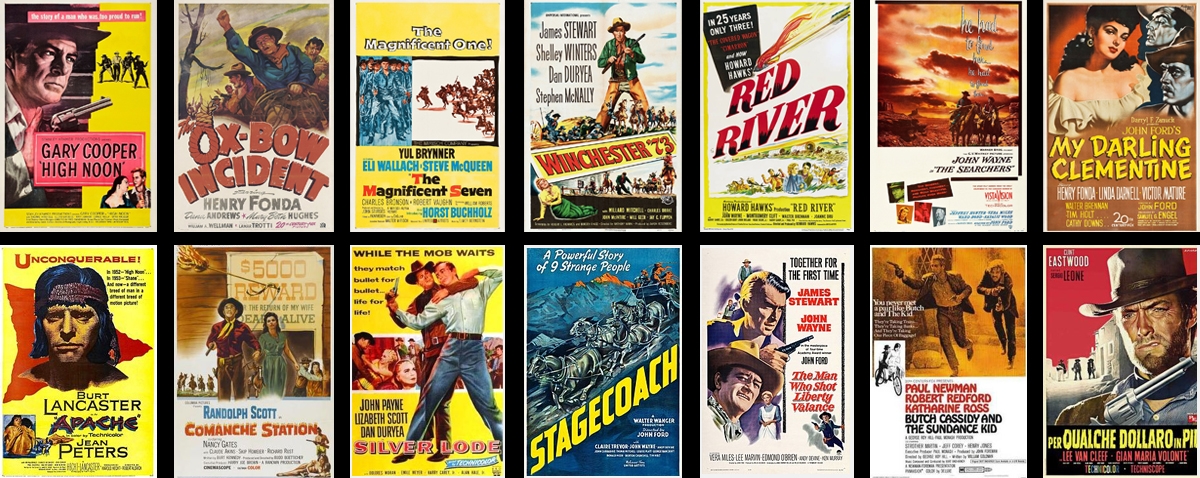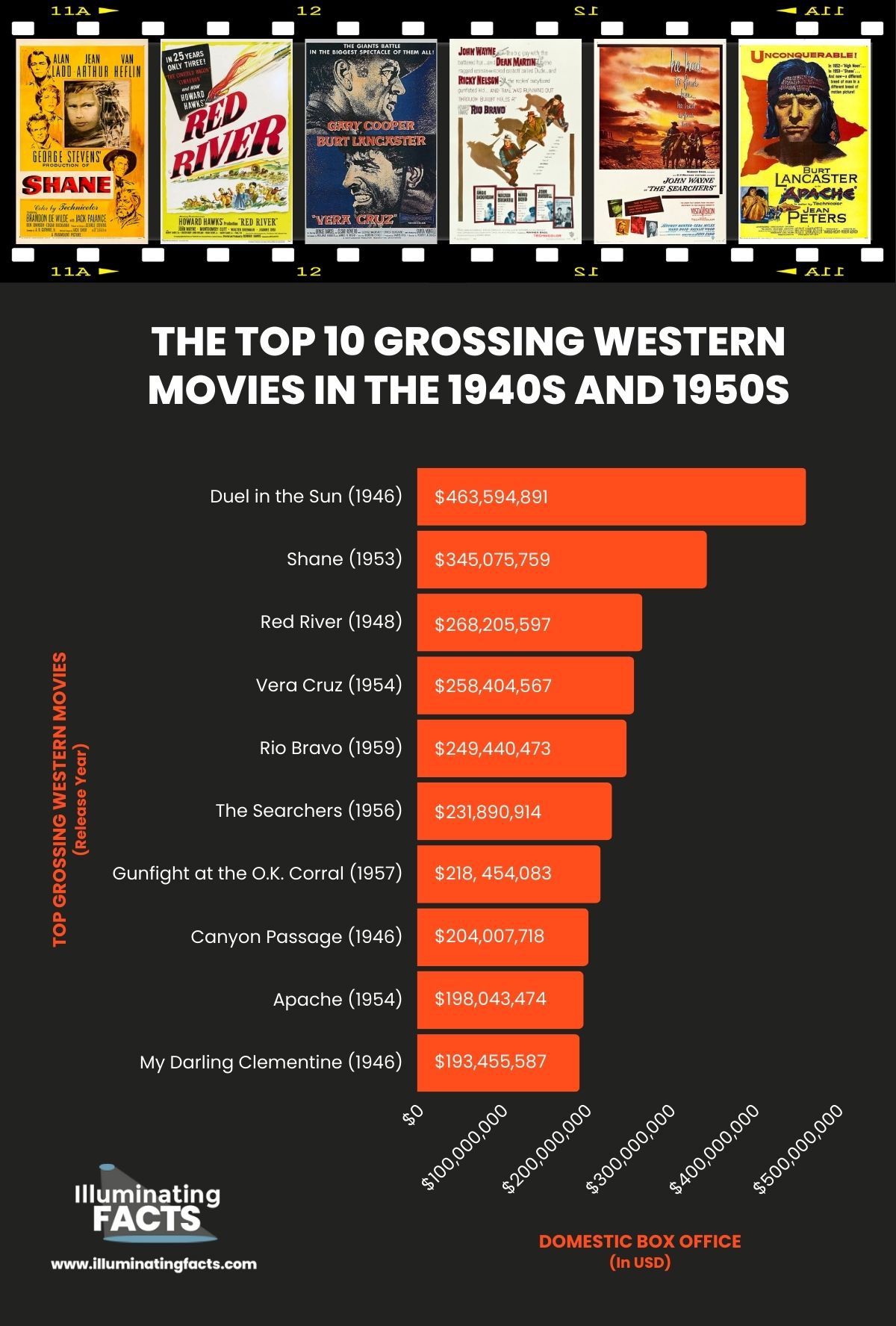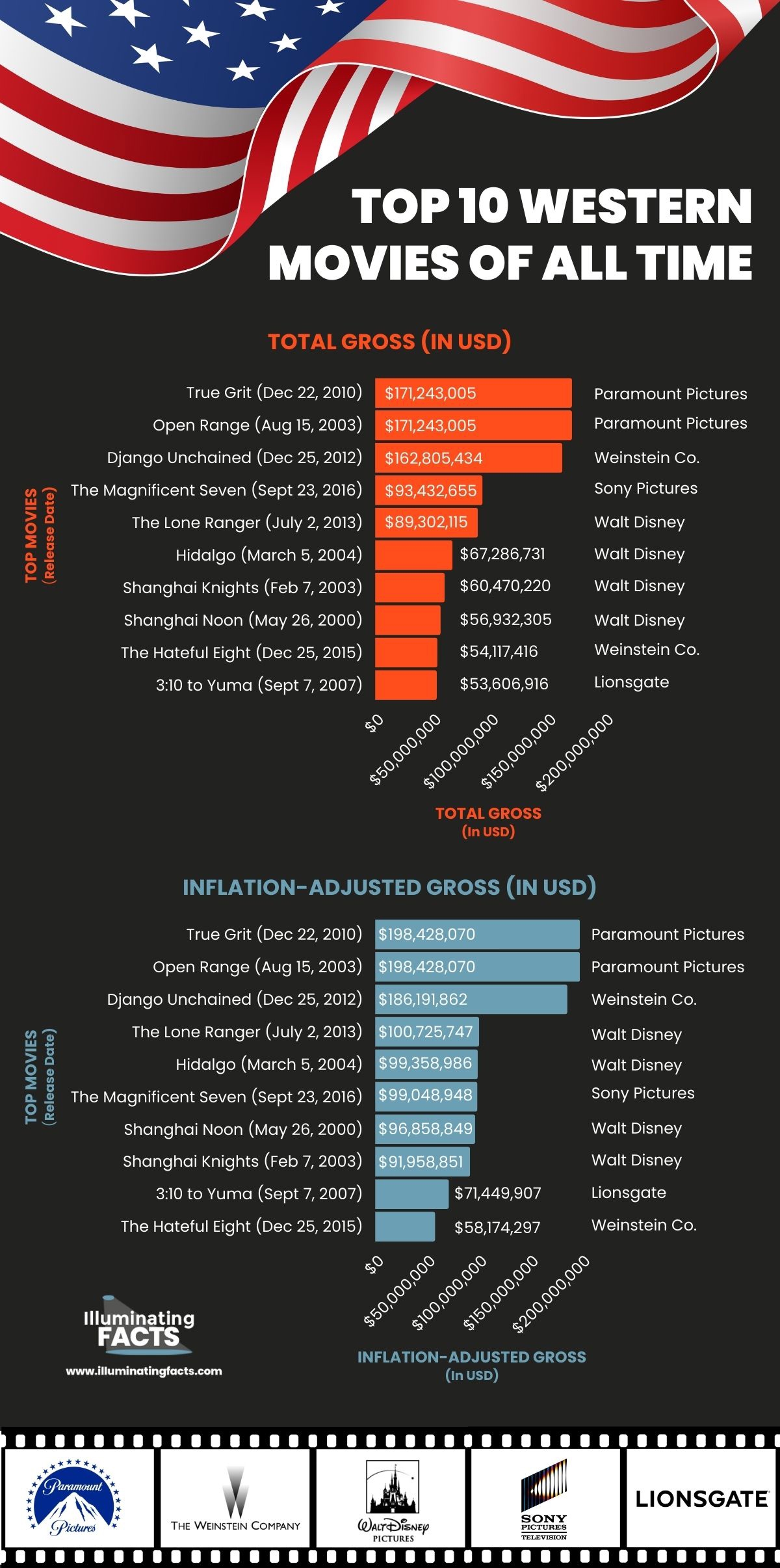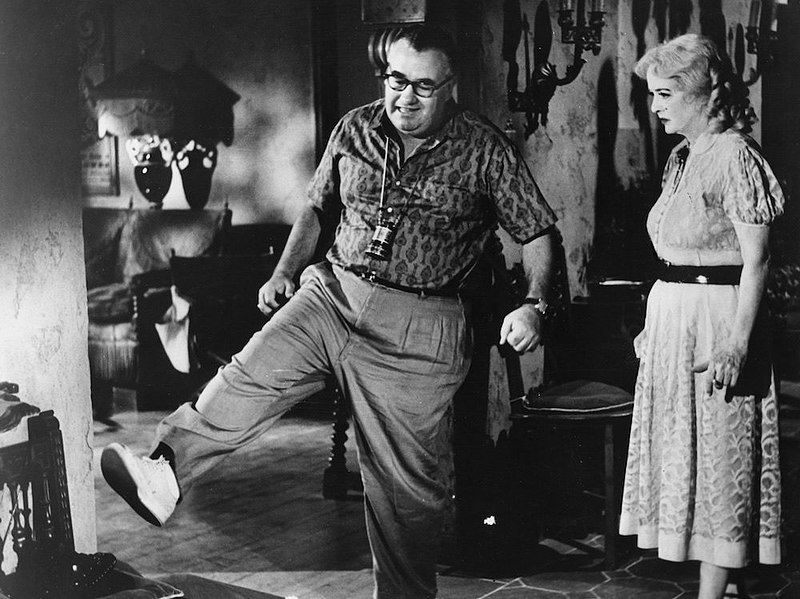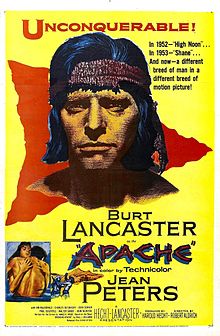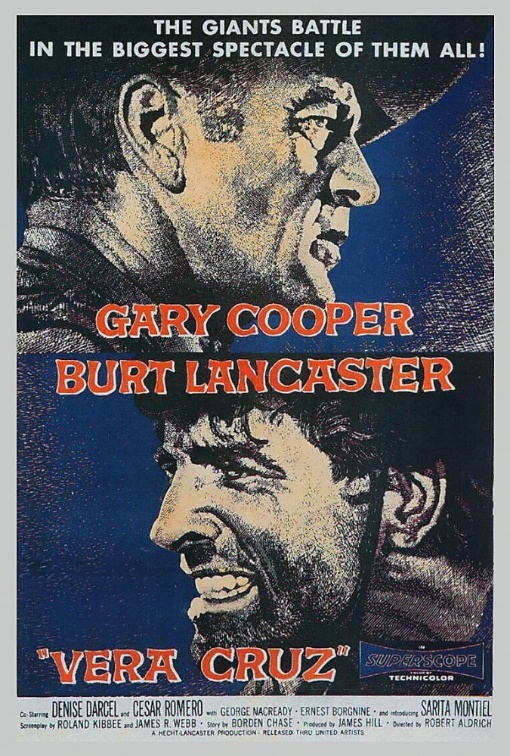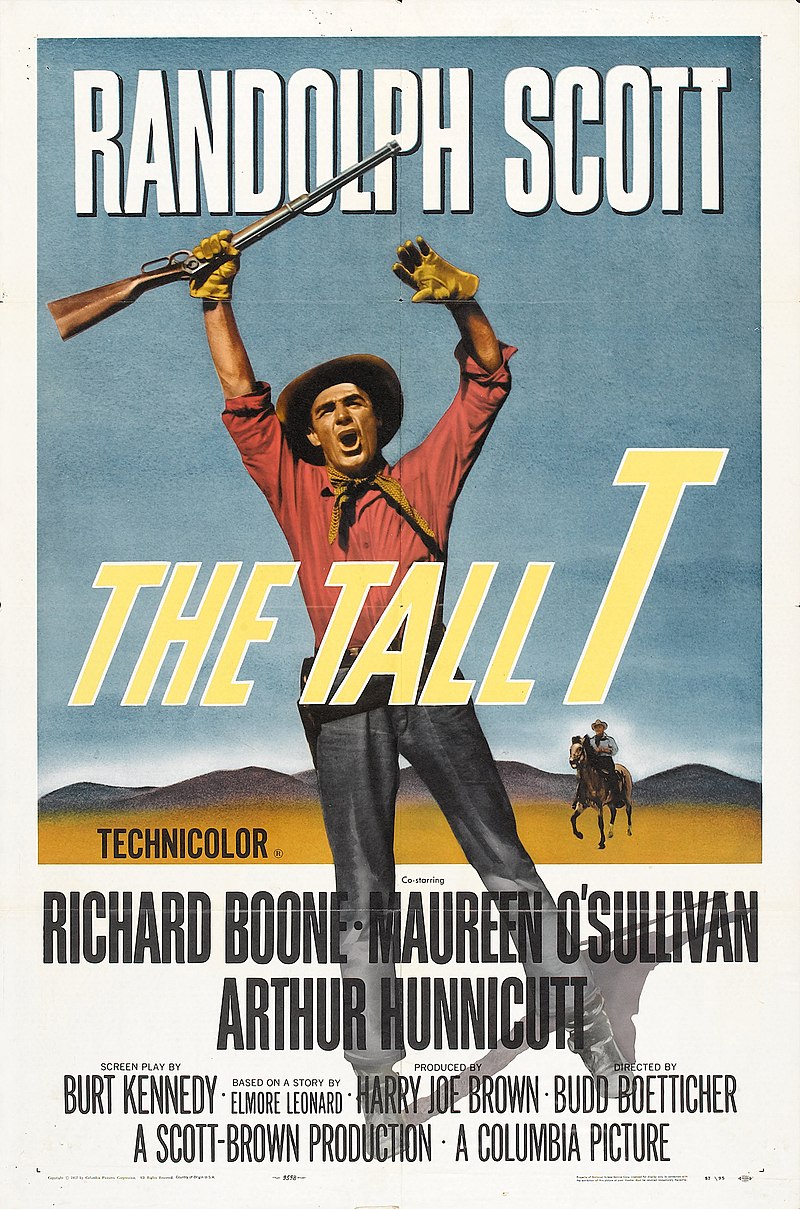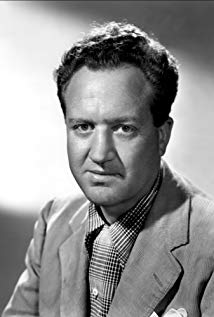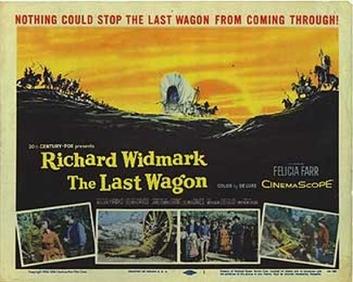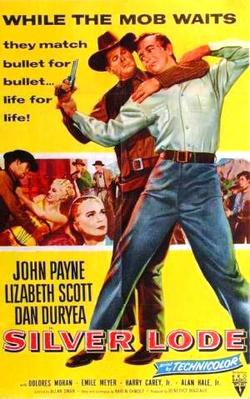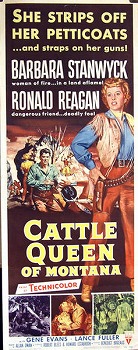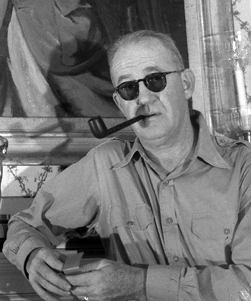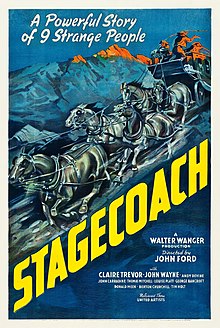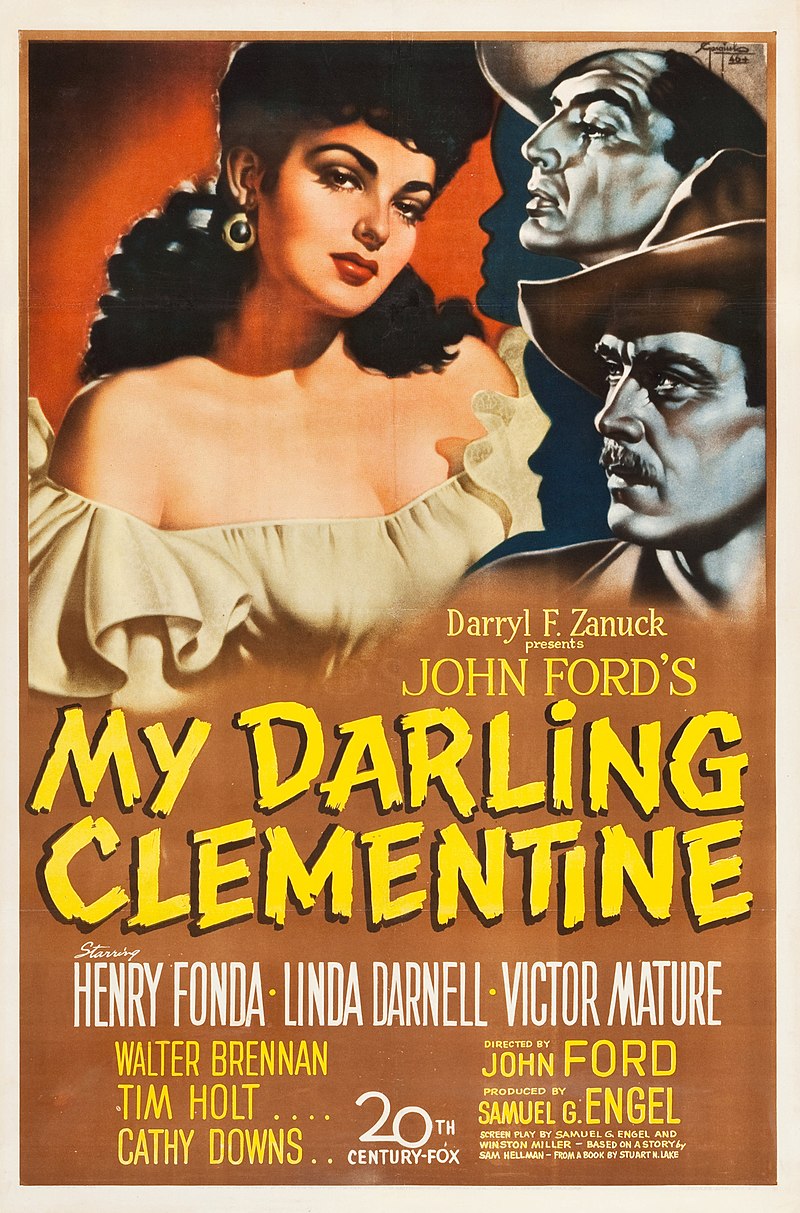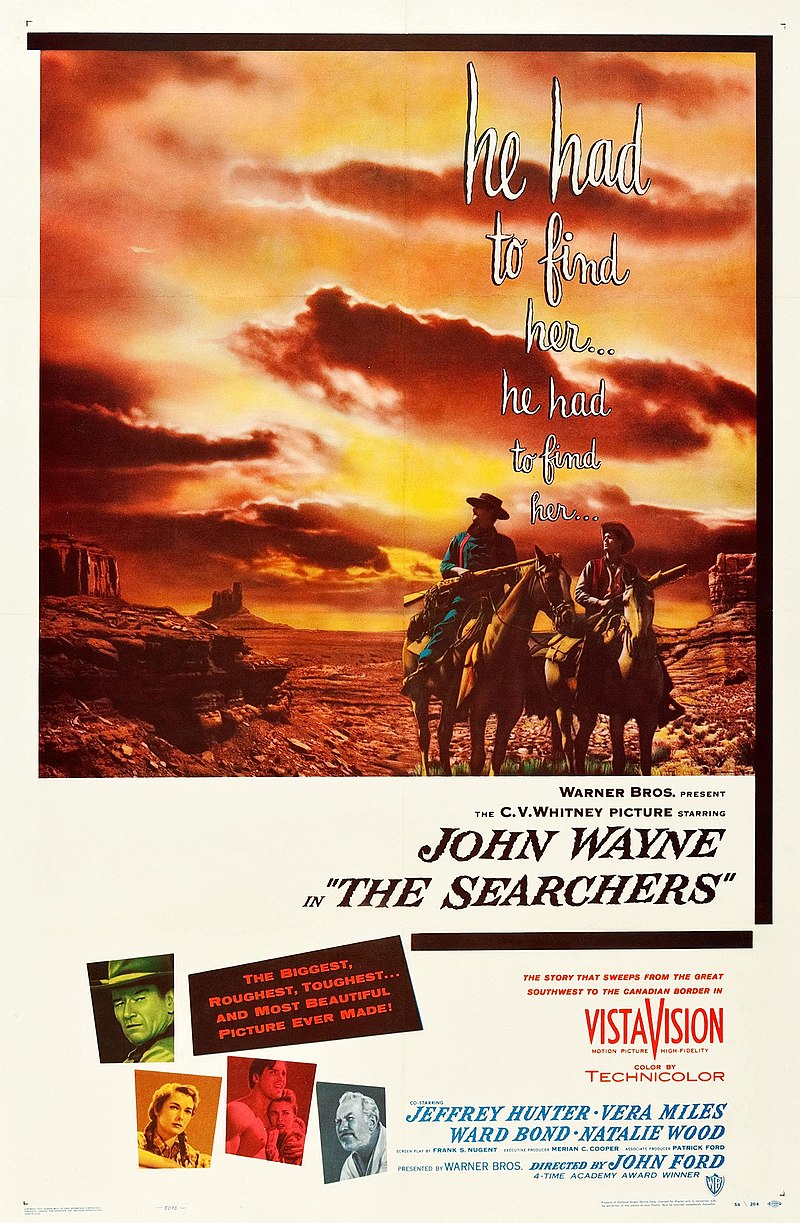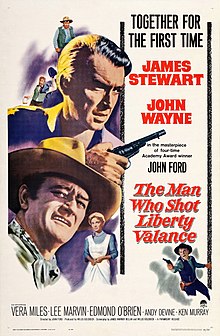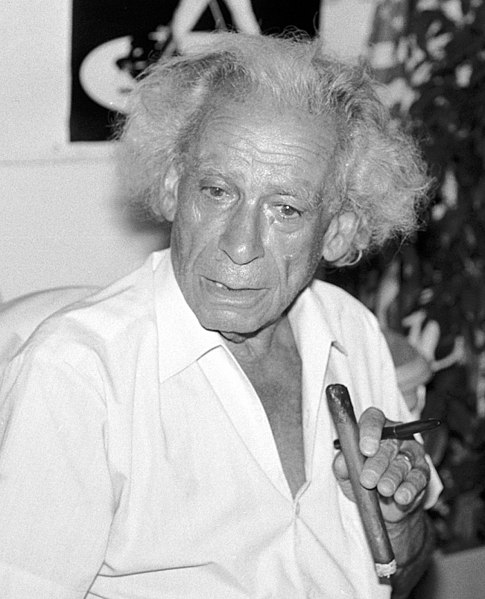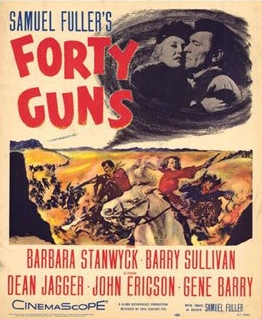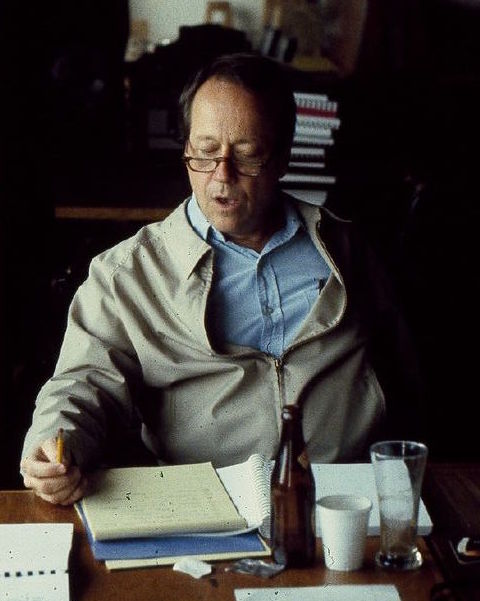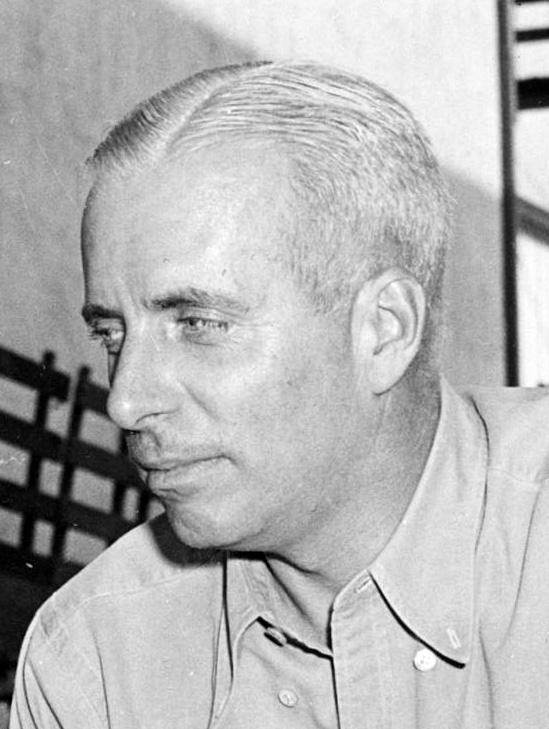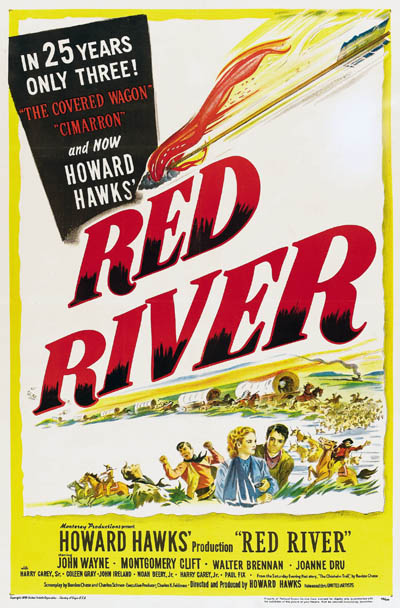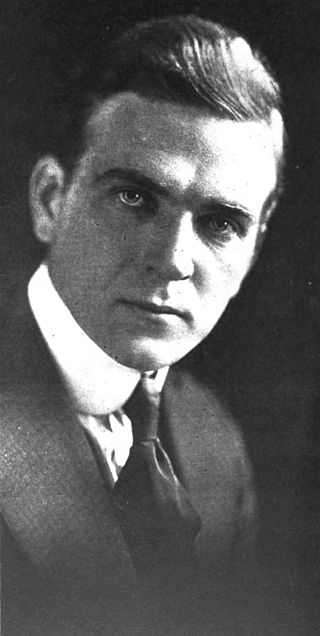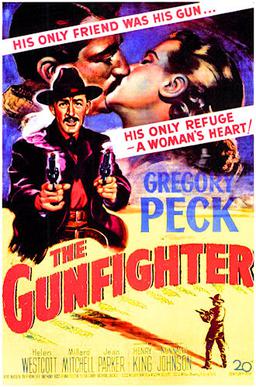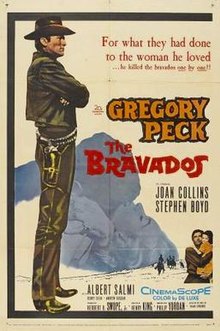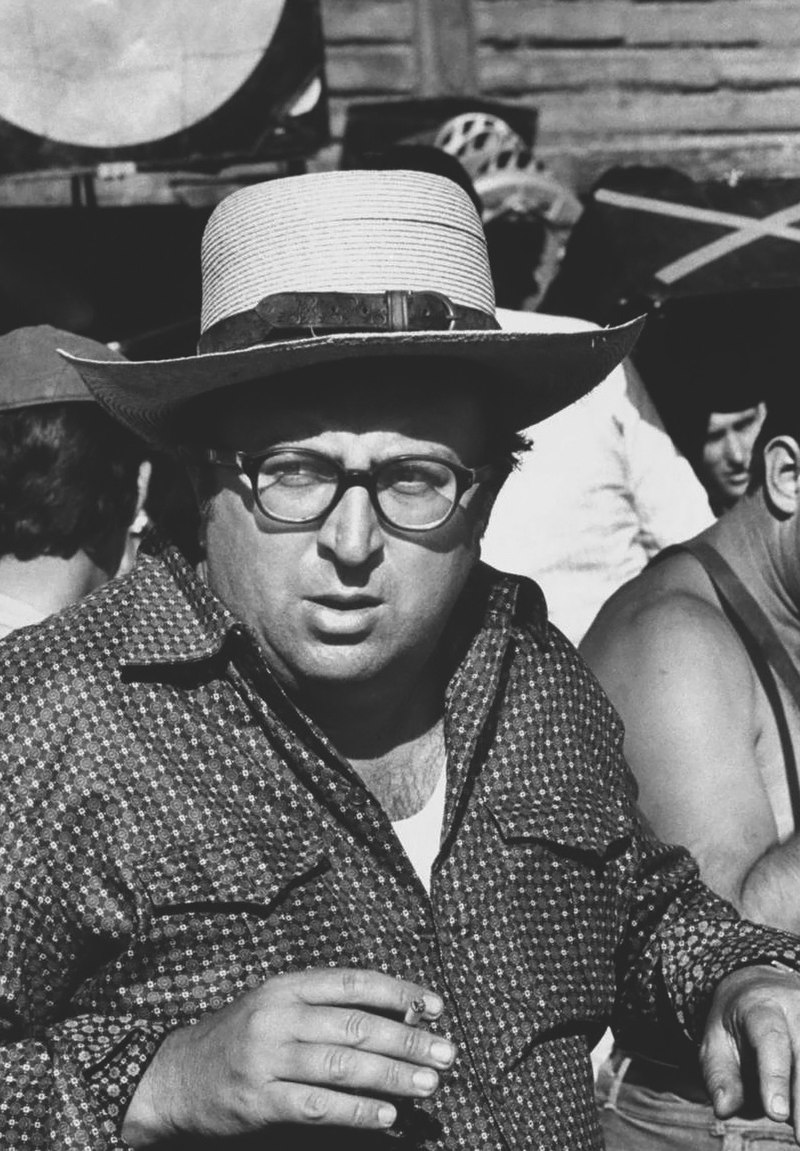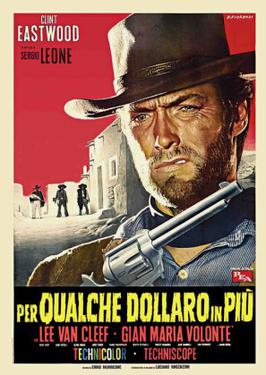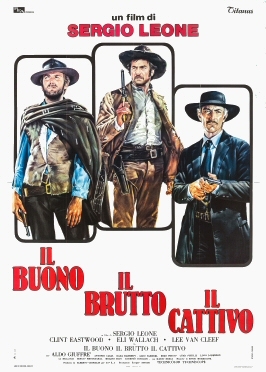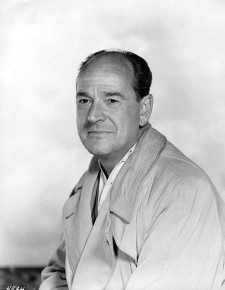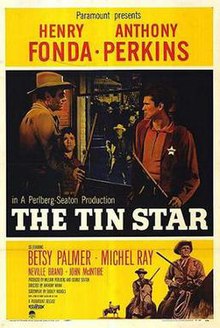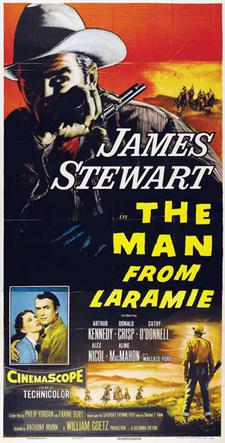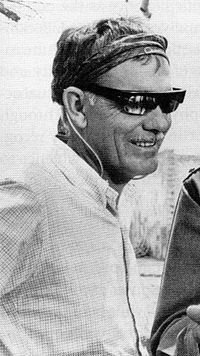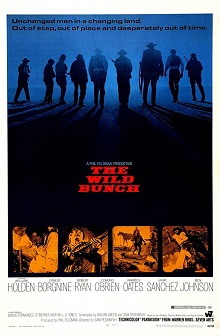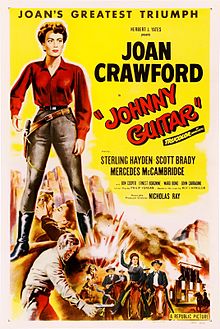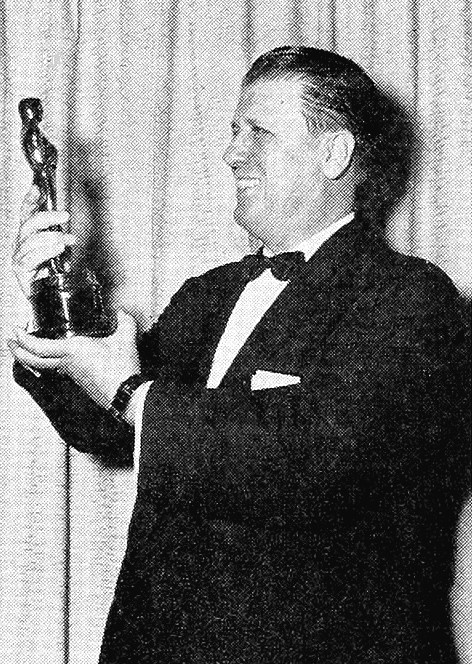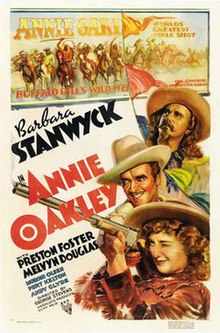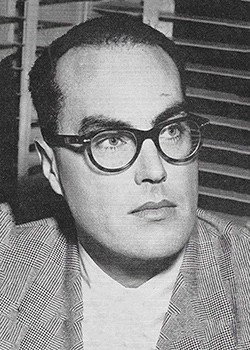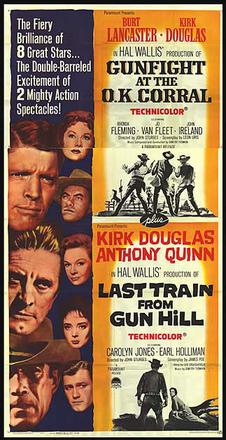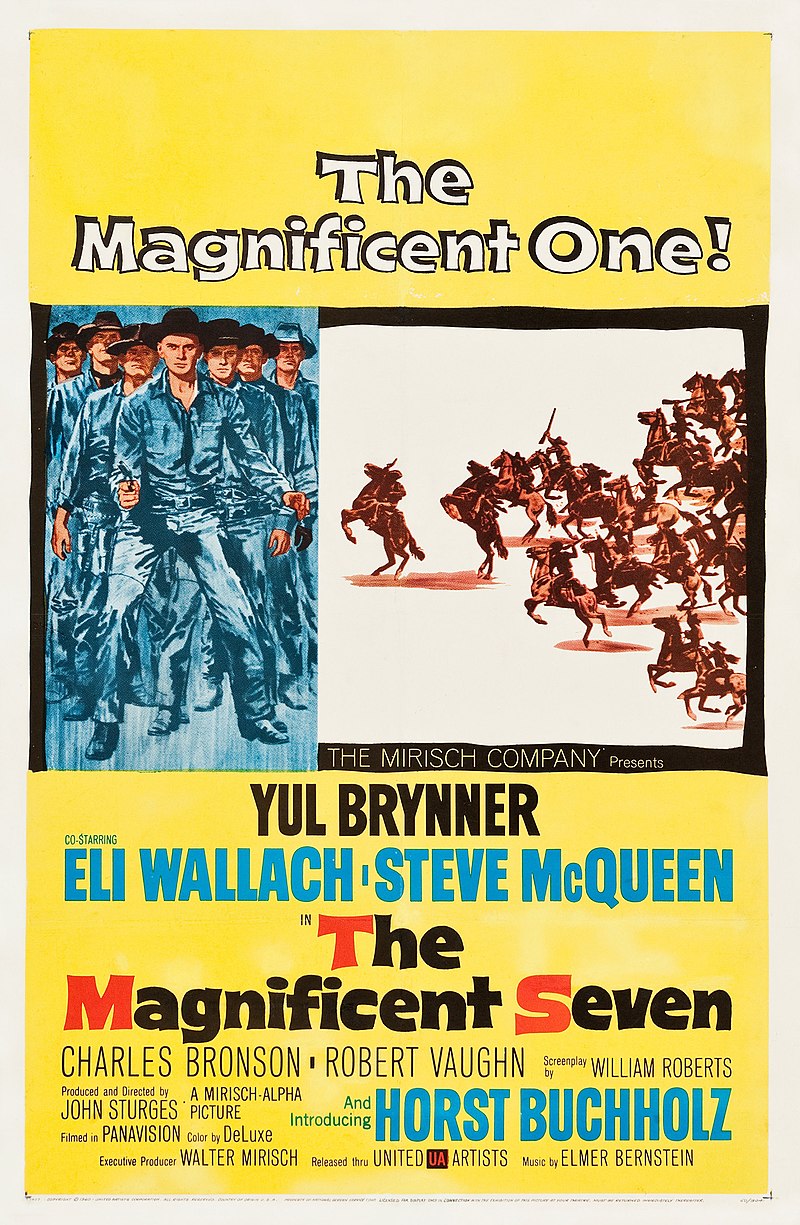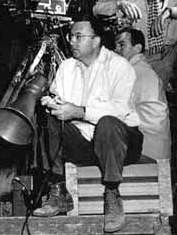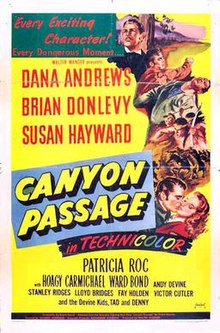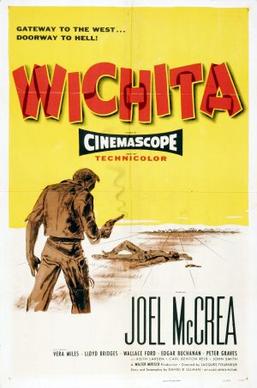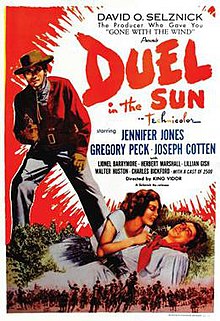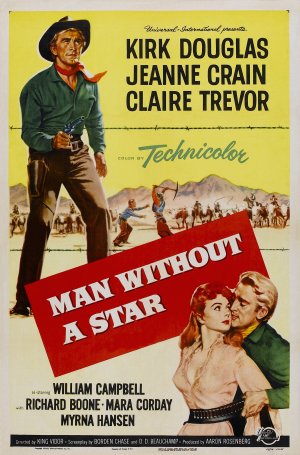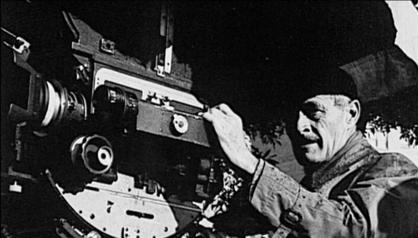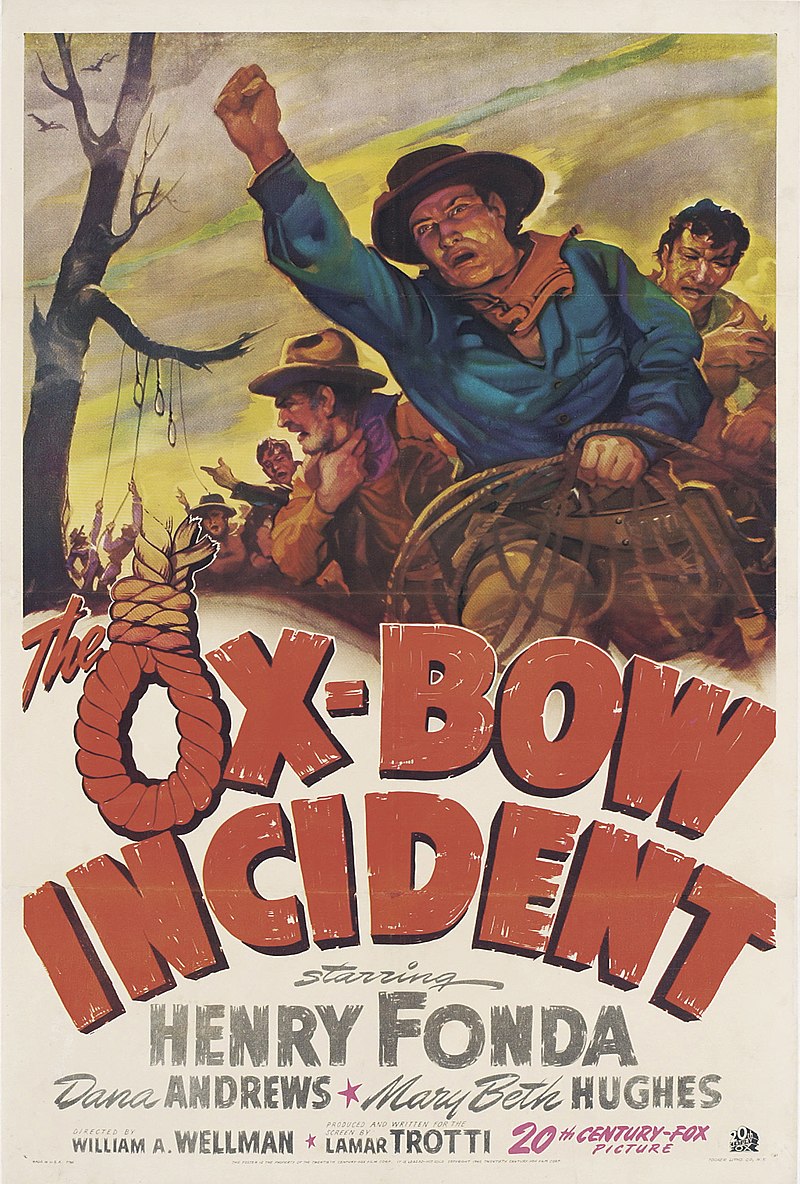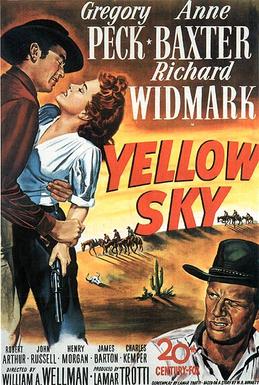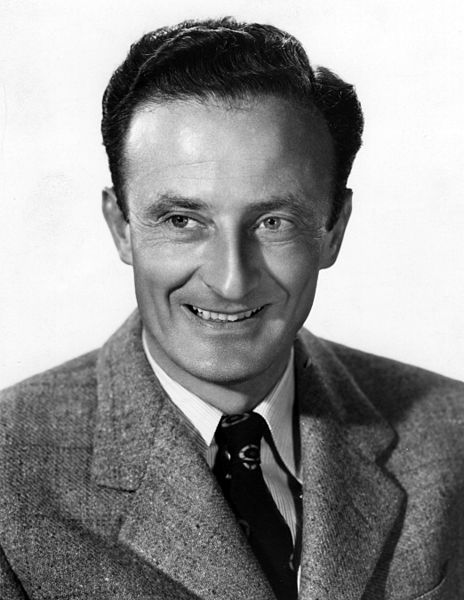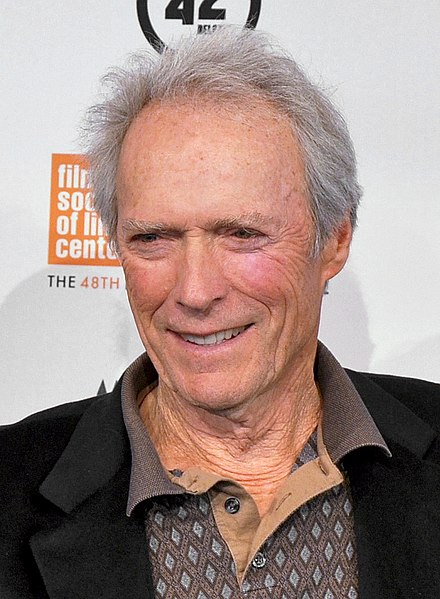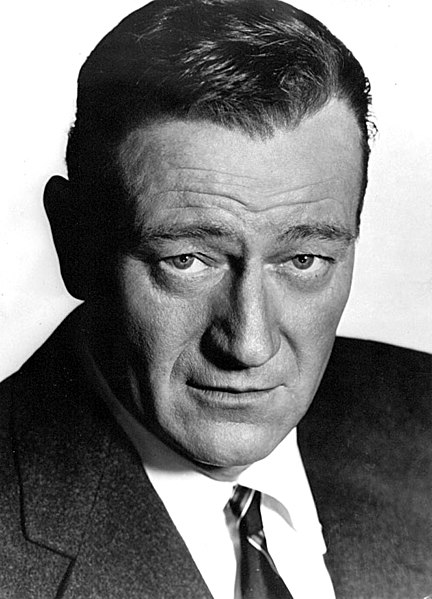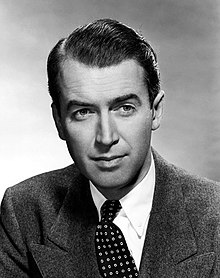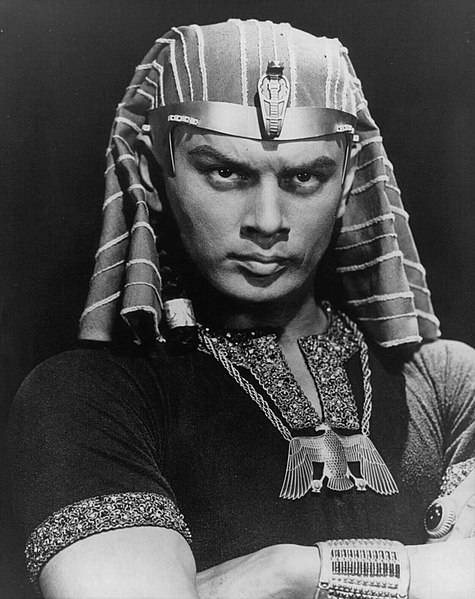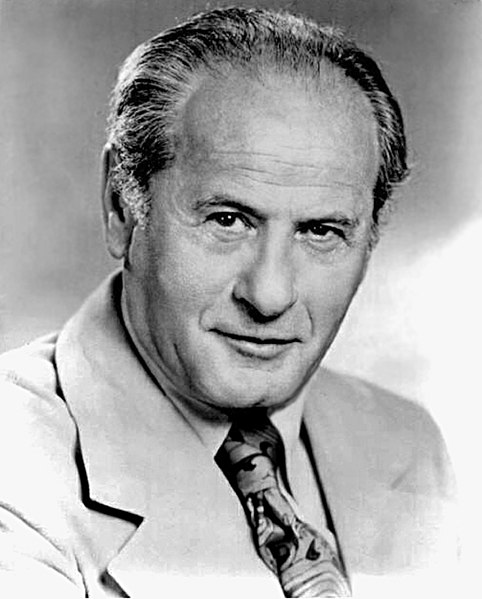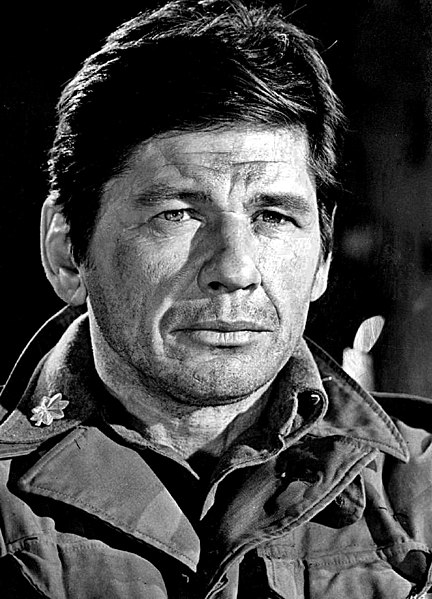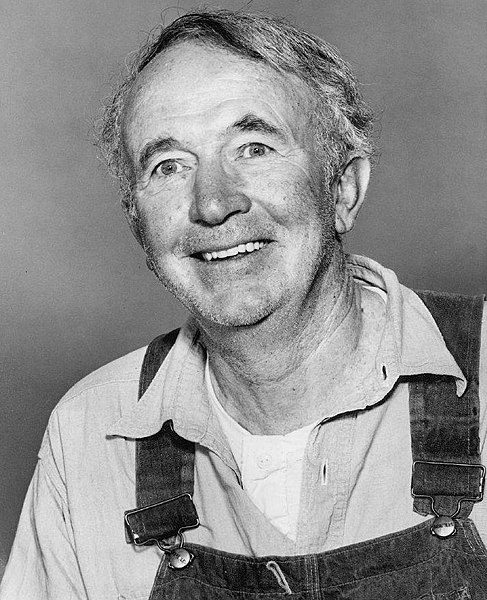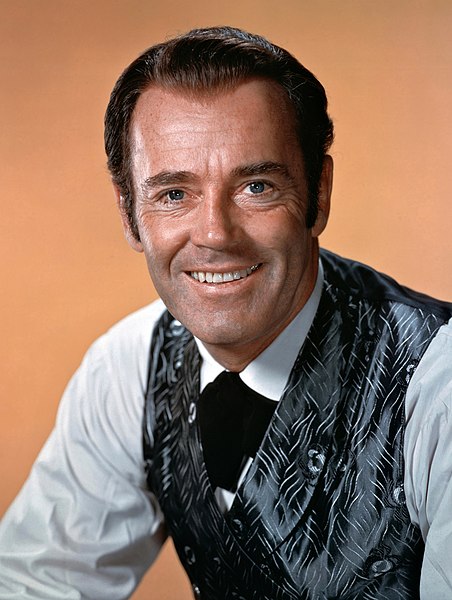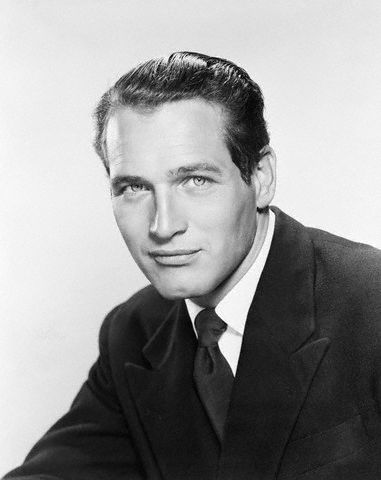The Western genre, which has its roots in penny dreadful and American folktales, first gained popularity in the US and UK during the early years of cinema. In particular, several other nations have developed their cinematic traditions similar to the American Western, creating genres like the Spaghetti Western or Dacoit Western, while other writers and filmmakers have continued to reexamine the core ideas of the Western with subgenres like Epic Westerns or Revisited Westerns. Western films quickly connected with a broad audience and have since become a major tentpole of modern popular culture, both in the US and abroad.
History of American Western Genre
The first Western films were short single-reel silents produced by Edison Studios in 1894 at their Black Maria studio in West Orange, New Jersey. These showcased former performers of Buffalo Bill’s Wild West show demonstrating abilities developed by living in the Old West, including Annie Oakley as an American sharpshooter and Sioux people for dancing.
The British short Kidnapping by Indians, produced by Mitchell and Kenyon in Blackburn, England, in 1899, is the earliest Western-themed narrative film ever discovered. The Great Train Robbery (1903), directed by Edwin S. Porter and starring Broncho Billy Anderson, is frequently mistakenly referred to as the first Western movie. It was based on the earlier British film, A Daring Daylight Burglary. Nevertheless, it has been agreed that Porter’s film established the formula for the Western film subgenre—crime, pursuit, and vengeance. The success of the movie allowed Anderson to make several hundred Western film shorts and establish himself as the first Western star on screen. The genre was so well-liked that William S. Hart and Tom Mix soon presented him with the competition.
Stories and Characters of American Western Movies
A white American male, nomadic drifter, cowboy, or gunfighter who rides a horse and is armed with a revolver and/or a rifle is a common character in stories. The male characters typically don vests, cowboy boots with spurs, broad-brimmed and high-crowned Stetson hats, neckerchief bandannas, and neckerchiefs. Buckskins and dusters are alternates to convention shirts and trousers, which are worn by most.
Furthermore, women are typically cast in supporting roles as saloon girls, prostitutes, or the wives of settlers and pioneers, or in secondary roles as the male lead’s romantic interest. Additionally, the wife’s character frequently offers some comic relief.
Numerous Native Americans from different tribes, African Americans, Mexicans, law enforcement officers, bounty hunters, outlaws, bartenders, traders, gamblers, soldiers, pioneers, and settlers are among the other recurring characters.
Golden Age of The Western
The popularity of westerns has waxed and waned over the years. The period from the late 1940s to the 1950s has been called the “Golden Age of the Western”.
The Top Grossing Western Movies in the 1940s and 1950s
Movies | Year | Domestic Box Office |
Duel in the Sun | 1946 | $463,594,891 |
Shane | 1953 | $345,075,759 |
Red River | 1948 | $268,205,597 |
Vera Cruz | 1954 | $258,404,567 |
Rio Bravo | 1959 | $249,440,473 |
The Searchers | 1956 | $231,890,914 |
Gunfight at the O.K. Corral | 1957 | $218, 454,083 |
Canyon Passage | 1946 | $204,007,718 |
Apache | 1954 | $198,043,474 |
My Darling Clementine | 1946 | $193,455,587 |
Broken Arrow | 1950 | $192,502,973 |
Yellow Sky | 1948 | $167,815,784 |
The Man From Laramie | 1955 | $165, 181,317 |
Stagecoach | 1939 | $161,639,513 |
High Noon | 1952 | $156,434,333 |
Johnny Guitar | 1954 | $141,459,624 |
Winchester ‘73 | 1950 | $122,008,918 |
Wichita | 1955 | $120,031,866 |
Man Without a Star | 1955 | $110,120,878 |
The Gunfighter | 1950 | $105,741,082 |
The Bravados | 1958 | $96,000,000 |
The Ox-Bow Incident | 1943 | $60,200,000 |
The Tall T | 1957 | $46,700,000 |
Top Western Movies of All Time
The Western, also known as the “Old West” or the “Wild West,” is a genre of fiction that is typically set in the Western United States in the late 19th or early 20th century. It is portrayed in Western media as a hostile, sparsely populated frontier in a state of close to total lawlessness, patrolled by outlaws, sheriffs, and numerous other stock characters. Western stories frequently focus on the slow-moving efforts to colonize and civilize the wild and lawless American West, frequently in service of larger themes of justice, freedom, Manifest Destiny, and the history and identity of the United States as a nation. Here is the list of top western movies of all time:
Movies | Release Date | Theatrical Distributor | Total Gross | Inflation-Adjusted Gross |
True Grit | December 22, 2010 | Paramount Pictures | $171,243,005 | $198, 428,070 |
Django Unchained | December 25, 2012 | Weinstein Co. | $162,805,434 | $186, 191,862 |
The Lone Ranger | July 2, 2013 | Walt Disney | $89,302,115 | $100,725,747 |
Hidalgo | March 5, 2004 | Walt Disney | $67,286,731 | $99,358,986 |
The Magnificent Seven | September 23, 2016 | Sony Pictures | $93,432,655 | $99,048,948 |
Shanghai Noon | May 26, 2000 | Walt Disney | $56,932,305 | $96,858,849 |
Shanghai Knights | February 7, 2003 | Walt Disney | $60,470,220 | $91,958,851 |
Open Range | December 22, 2010 | Paramount Pictures | $171,243,005 | $198, 428,070 |
3:10 to Yuma | September 7, 2007 | Lionsgate | $53,606,916 | $71,449,907 |
The Hateful Eight | December 25, 2015 | Weinstein Co. | $54,117,416 | $58,174,297 |
Desperado | August 25, 1995 | Sony Pictures | $25,532,388 | $53,823,443 |
The Dark Tower | August 4, 2017 | Sony Pictures | $50,701,325 | $51,831,793 |
A Million Ways To Die In The West | May 30, 2014 | Universal | $42,720,965 | $47,949,967 |
The Missing | November 26, 2003 | Sony Pictures | $26,900,336 | $40,873,817 |
The Quick and the Dead | February 10, 1995 | Sony Pictures | $18,552,460 | $39,109,436 |
The Alamo | April 9, 2004 | Walt Disney | $22,406,362 | $33,086,360 |
Hostiles | December 22, 2017 | Entertainment Studios Motion Pictures | $29,819,114 | $30,016,849 |
Hell or High Water | August 12, 2016 | Lionsgate | $27,007,844 | $28,631,436 |
Appaloosa | September 19, 2008 | Warner Bros. | $20,211,394 | $25,806,031 |
All the Pretty Horses | December 22, 2000 | Miramax | $15,527,125 | $25,806,031 |
American Outlaws | August 17, 2001 | Warner Bros | $13,264,986 | $21,491,151 |
Tall Tale | March 24, 1995 | Walt Disney | $8,247,627 | $17,386,375 |
Last of the Dogmen | September 8, 1995 | Savoy | $7,008,542 | $14,774,328 |
News of the World | December 25, 2020 | Universal | $12,668,325 | $12,668,327 |
The Beguiled | June 23, 2017 | Focus Features | $10,576,669 | $10,812,485 |
The Top Directors
The “Golden Age of the Western” was thought to last from the late 1940s to the early 1950s. It is exemplified by the works of several well-known directors, such as:
1. Robert Aldrich
Robert Burgess Aldrich was an American film director, producer, and screenwriter. His best-known films are Vera Cruz (1954) and Apache (1954).
At the North American box office, Vera Cruz (1954) made an estimated $5 million during its initial release and $9 million overall. On the other hand, the Apache Film (1954) was a huge hit, grossing $6 million in total North American rentals and over $3 million in theatrical rentals in its first year of release. In 1954, the movie also brought in $3.25 million in American and Canadian rentals, and it eventually made $10 million in total in American and Canadian box office revenue.
2. Budd Boetticher
Oscar “Budd” Boetticher Jr. was an American film director. The Tall T (1957) and Comanche Station (1960) are two of the low-budget Westerns he directed in the late 1950s for which he is best remembered.
The Tall T (1957) was chosen by the Library of Congress for the United States National Film Registry in 2000 because it was “culturally, historically, or aesthetically significant.” In addition, Comanche Station (1960) was filmed in Central California’s Eastern Sierra region, close to Lone Pine and not far from Mount Whitney. The opening and closing scenes of the movie were set against the massive granitic boulders known as the Alabama Hills.
3. Delmer Daves
Delmer Lawrence Daves was an American screenwriter, film director, and film producer. He made films in a variety of genres, such as war movies and noir, but is best known for his Westerns, particularly Broken Arrow (1950) and The Last Wagon (1956).
Broken Arrow (1950) received three Academy Award nominations and a Golden Globe nomination for the best film advancing global understanding. Film historians claim that the film was one of the first significant Westerns to portray the Indians sympathetically since the Second World War. That’s why, Delmer Daves, the film’s director, acknowledged that it was challenging to find a picturesque setting for The Last Wagon (1956) because his previous western, Broken Arrow (1950), had made the area well-known.
4. Allan Dwan
Allan Dwan was a pioneering Canadian-born American motion picture director, producer, and screenwriter. His best-known works include Cattle Queen of Montana and Silver Lode (1954). (1954).
Silver Lode is a 1954 American Technicolor Western starring John Payne, Lizabeth Scott, and Dan Duryea. Whereas, Cattle Queen of Montana is a 1954 American Western film shot in Technicolor and starring Barbara Stanwyck and Ronald Reagan. The supporting cast members are Gene Evans, Lance Fuller, Jack Elam, Chubby Johnson, and Morris Ankrum.
5. John Ford
John Martin Feeney, an American film director, and a former naval officer were better known by his stage name, John Ford. Stagecoach (1939), My Darling Clementine (1946), The Searchers (1956), and The Man Who Shot Liberty Valance (1962) are just a few of the Westerns for which he is well known. He won six Academy Awards, including a record-breaking four wins for best director.
Stagecoach (1939) made a $297,690 profit and received immediate praise from critics and trade publications. On the other hand, many film critics consider My Darling Clementine (1946) to be among the greatest Westerns ever produced.
The movie was one of the first 75 movies added to the United States National Film Registry after the Library of Congress determined it to be “culturally, historically, or aesthetically significant” in 1991. Furthermore, John Ford’s The Searchers (1956) was one of the first 25 movies chosen for the National Film Registry, which was established by the United States Library of Congress in 1989 after it was determined to be “culturally, historically, or aesthetically significant.” In its first year of release, the movie made $4.8 million in rentals in the US and Canada.
In addition, John Ford’s The Man Who Shot Liberty Valance (1962) was chosen by the Library of Congress in 2007 for inclusion in the United States National Film Registry because it was “culturally, historically, or aesthetically significant.” Released in April 1962, the film was a commercial and critical success. It cost $3.2 million to produce, but it brought in $8 million, ranking it as the 15th highest-grossing movie of 1962. One of the few Westerns to receive an Academy Award nomination for Best Costume Design (Black and White) was because of Edith Head’s costumes.
6. Samuel Fuller
American film director, screenwriter, novelist, journalist, and World War II veteran Samuel Michael Fuller was known for producing low-budget genre films with contentious themes that were frequently made outside the traditional studio system. He is famous for his western films, such as Run Of The Arrow (1957) and Forty Guns (1957).
Run Of The Arrow (1957) is set at the end of the American Civil War, and the movie was filmed in Technicolor. On the other hand, Forty Guns is a 1957 American Western film, produced in black-and-white CinemaScope and released by the 20th Century Fox studio. Also, modern-day critics have given the movie high marks. Based on 20 reviews, Rotten Tomatoes gives Forty Guns (1957) a 90% approval rating with an 8/10 average.
7. George Roy Hill
George Roy Hill was an American film director. His most well-known work as a director includes Butch Cassidy and the Sundance Kid (1969).
Butch Cassidy and The Sundance Kid (1969) was chosen by the Library of Congress in 2003 for inclusion in the United States National Film Registry because it was “culturally, historically, or aesthetically significant.” In its first week, the movie made $82,625 from two New York City theaters. It gained popularity the following week and spent two weeks at the top of the box office in both the US and Canada. By the end of 1969, it had generated $15 million in theatrical rentals in the United States and Canada. Fox records state that the movie needed $13,850,000 in rentals to break even, but by December 11, 1970, it had earned $36,825,000 and the studio had made a pretty large profit. In the end, it generated a rental income of $45,953,000. It was the highest-grossing movie released in 1969, with a final US gross of over $100 million.
8. Howard Hawks
Howard Winchester Hawks worked in the golden age of Hollywood as a director, producer, and screenwriter. He was dubbed “the greatest American director who is not a household name” by critic Leonard Maltin. Hawks was a versatile director who experimented with a variety of genres, including comedies, dramas, gangster movies, science fiction, film noir, war movies, and westerns. Red River (1948), Rio Bravo (1959), and El Dorado (1966) are some of his most well-liked westerns. He frequently portrayed tough-talking female characters, and this helped to popularize the term “Hawksian woman.”
Red River (1948) was chosen by the Library of Congress for inclusion in the United States National Film Registry in 1990 as being “culturally, historically, or aesthetically significant.” In 2008, the American Film Institute named Red River the fifth greatest Western of all time in the AFI’s 10 Top 10 list. On the other hand, Rio Bravo (1959) was chosen for preservation in the National Film Registry by the Library of Congress in 2014 after being deemed also as “culturally, historically, or aesthetically significant”.
Furthermore, Hawks’ El Dorado (1966) first premiered on December 17, 1966, in Japan, and then on June 7, 1967, in the United States. The movie received positive reviews and did well financially, earning $5,950,000 in North American rentals on a $12 million box office haul.
9. Henry King
Henry King was an American actor and film director. King, considered one of the best and most successful directors of his generation, had seven films nominated for Academy Awards for Best Picture and two for Best Director. His well-known western films are The Gunfighter (1950) and The Bravados (1958).
Gunfighter (1950) is a 1950 American Western starring Gregory Peck, Helen Westcott, Millard Mitchell, and Karl Malden. The movie was King’s second of six projects with Peck. Also, William Bowers and André de Toth were nominated for Best Motion Picture Story at the 23rd Academy Awards. Meanwhile, The Bravados (1958), marked King and Peck’s fifth and final collaboration.
10. Sergio Leone
The Spaghetti Western genre is credited to the Italian film director, producer, and screenwriter Sergio Leone, who is also regarded as one of the most influential directors in cinematic history. Extremely close-up shots are often paired with protracted long shots in Leone’s movies. His movies include the Dollars Trilogy of Westerns featuring Clint Eastwood: A Fistful of Dollars (1964), For a Few Dollars More (1965), The Good, the Bad, and the Ugly (1966); and the Once Upon a Time film: Once Upon a Time in the West (1968), Duck, You Sucker! (1971), and Once Upon a Time in America (1984).
Leone’s For a Few Dollars More (1965) has a total worldwide gross outside of North America of $10.5 million and was the seventh most well-liked movie in France in 1966. On the other hand, his film, The Good, The Bad, And The Ugly (1966) made $6.3 million at the time in Italy. The movie brought in $25.1 million in North America. For a total global revenue of $38.9 million, it also made $7.5 million in other foreign markets.
Furthermore, Sergio Leone was a hit also when his film Once Upon A Time In The West (1968), sold 8,870,732 tickets in Italy. It generated $5,321,508 in revenue in the US from 3.7 million ticket sales. A total of 40,462,950 tickets were sold worldwide, with an additional 14,873,804 admissions sold in France and 13,018,414 admissions sold in Germany.
11. Anthony Mann
Anthony Mann, an American film director, and stage performer is best known for his work in the Western and film noir subgenres. As a director, he frequently worked with the cinematographer, John Alton. He worked with many of the era’s biggest stars while directing movies for several different production companies, including RKO and MGM. He produced several Westerns, including Winchester ’73 (1950), The Man From Laramie (1955), and The Tin Star (1957).
Winchester ’73 (1950) was nominated for a Writers Guild of America Award for Best Written American Western. The film was also chosen for preservation in the National Film Registry by the US Library of Congress in 2015 because it was “culturally, historically, or aesthetically significant.” On the other hand, his film. The Man From Laramie (1955) was one of the first Westerns to use CinemaScope to capture the scope of the landscape and was filmed in Technicolor.
Furthermore, The Tin Star (1957) of Mann was one of the few low-budget western films to receive an Oscar nomination for Best Writing, Story, or Screenplay. The said film has also earned a place in the genre classics since its release.
12. Sam Peckinpah
David Samuel Peckinpah was an American film director and screenwriter. His 1969 Western epic The Wild Bunch, which was ranked No. 80 on the American Film Institute’s top 100 list, was nominated for an Academy Award. His films took a revisionist stance toward the Western genre while also depicting action and violence innovatively and explicitly visually. In addition, his well-known western movies are Ride The High Country (1962) and The Wild Bunch (1969).
Ride the High Country (1962) film was chosen by the United States Library of Congress in 1992 for inclusion in the National Film Registry as being “culturally, historically, or aesthetically significant.” On the other hand, The Wild Bunch (1969) was also chosen for preservation in the United States National Film Registry in 1999 by the Library of Congress as “culturally, historically, and aesthetically significant.” The said film was ranked as the 69th most thrilling movie and the 80th best American movie by the American Film Institute. In addition, it was ranked as the sixth-best Western in the AFI’s 2008 list of the top 10 movies in each of the 10 genres.
13. Nicholas Ray
American film director, actor, and screenwriter Nicholas Ray is best known for the 1955 movie Rebel Without a Cause. He is admired for several narrative films made between 1947 and 1963, such as They Live By Night, In A Lonely Place, Johnny Guitar, and Bigger Than Life, as well as an experimental film called We Can’t Go Home Again, which was in progress when Ray passed away in the 1970s.
As a “culturally, historically, or aesthetically significant” film in 2008, Johnny Guitar was chosen for preservation in the United States National Film Registry by the Library of Congress. Also, the film made $2.5 million in North American rentals during its initial theatrical run.
14. George Stevens
George Cooper Stevens was an American film director, producer, screenwriter, and cinematographer. Films he produced were nominated for the Academy Award for Best Motion Picture six times, while he also received five nominations as Best Director, winning twice. His notable western films are Annie Oakley (1935) and Shane (1953).
Annie Oakley is a 1935 American Western film starring Barbara Stanwyck, Preston Foster, Melvyn Douglas, and Moroni Olsen. The life of Annie Oakley is the basis for the movie. On the other hand, less than ten years had passed since the real-life Oakley’s death when the movie was released. It was also reported that the film generated a $48,000 profit. On the other hand, On April 23, 1953, Stevens’ film Shane (1953), had its New York City premiere at Radio City Music Hall and made $114,000 there in its first four weeks. In total, theater rentals for the movie in the US and Canada brought in about $9 million. According to one estimate, that translates into actual box office earnings of around $20 million.
15. John Sturges
John Eliot Sturges was an American film director. His famous films include Bad Day at Black Rock (1955), Gunfight at the O.K. Corral (1957), The Magnificent Seven (1960), The Great Escape (1963), and Ice Station Zebra (1968). The Library of Congress chose The Magnificent Seven (2013) and Bad Day at Black Rock (2018) as “culturally, historically, or aesthetically significant” films to be preserved in the United States National Film Registry. The film Gunfight At The O.K. Corral (1957) was a big hit and made $4.7 million during its initial release and $6 million during its second release.
Meanwhile, The Magnificent Seven (1960) was a critical and financial success and is regarded as one of the best Western movies ever made. In addition, the Library of Congress chose the movie in 2013 for inclusion in the United States National Film Registry because it was “culturally, historically, or aesthetically significant.”
16. Jacques Tourneur
French filmmaker Jacques Tourneur is renowned for his work on the classic noir Out of the Past as well as several low-budget horror movies for RKO Studios, such as Cat People, I Walked with a Zombie, and The Leopard Man. He was also the director of the Columbia Pictures film, Night of the Demon. His well-known western films are Canyon Passage (1946) and Wichita (1955).
The film Canyon Passage (1946), which includes love triangles and an Indian uprising, was adapted from Ernest Haycox’s 1945 Saturday Evening Post novel Canyon Passage. Variety reports that the movie lost $63,784 in 1946 despite having rented for $2,250,000. On the other hand, Wichita (1955), won “Best Picture – Outdoor Drama” from the Hollywood Foreign Press Association 1955.
17. King Vidor
The 67-year filmmaking career of American director, producer, and screenwriter King Wallis Vidor successfully spanned the silent and sound eras. His writings stand out for their vivid, sympathetic, and humane depictions of modern social issues. Vidor, regarded as an auteur filmmaker, worked across various genres and frequently pushed the boundaries of cinematic conventions. His notable western films are Duel In The Sun (1946) and Man Without A Star (1955).
The film, Duel in The Sun (1946), during its initial run, was screened at higher admission prices, increasing its earnings from rentals in the United States and Canada to $8.7 million. The movie only made a profit because of the high production costs (rumored to be over $6,000,000), and the $2,000,000 advertising campaign (unheard of at the time). Furthermore, King Vidor’s film, Man Without A Star (1955). was screened at the 70th Berlin International Film Festival in February 2020 as a part of a retrospective honoring King Vidor’s career. Kirk Douglas, who’s a star in the film, later calculated that he earned more than $1 million from the movie.
18. William A. Wellman
American director William Augustus Wellman is renowned for his work in the crime, adventure, and action genres, frequently focusing on aviation themes out of a particular passion. He also helmed several acclaimed satirical comedies. He began his film career as an actor and went on to direct more than 80 movies while occasionally sharing credit as a producer and consultant. Wings, which Wellman directed and which won the first Academy Award for Best Picture at the inaugural Academy Awards ceremony, made history in 1927. His well-known western films are The Ox-Bow Incident (1943) and Yellow Sky (1948).
The Ox-Bow Incident (1943) was a Best Picture nominee at the 16th Academy Awards but fell short of Casablanca. But the Library of Congress chose the film in 1998 for inclusion in the United States National Film Registry because it was “culturally, historically, or aesthetically significant.” On the other hand, Wellman’s The Yellow Sky Film (1948), is thought to have The Tempest by William Shakespeare as a loose inspiration for the narrative.
19. Fred Zinneman
The American director Alfred Zinneman was a native of the Austrian Empire. He directed and produced movies in a variety of genres, such as thrillers, westerns, film noir, and play adaptations, and he was honored with four Academy Awards. Throughout his 50-year career, he produced 25 full-length movies. His most famous western film is High Noon (1952).
High Noon 1952) was chosen as one of the first 25 movies to be preserved in the United States National Film Registry for being “culturally, historically, or aesthetically significant.” by the Library of Congress 1989. This classic movie’s plot has been partially or entirely repeated in later film productions. Also, the film grossed an estimated $3.4 million in North American theaters in 1952.
The Top Actors
1. Clint Eastwood
Clint Eastwood started in the Western genre through his collaborations with the incredible Italian director Sergio Leone in the 1960s. The young American actor, Eastwood, was a part of Leone’s “Dollars Trilogy,” in which the “Man With No Name” assisted those in need throughout a series of disconnected adventures. A Fistful of Dollars from 1964, For A Few Dollars More from 1965, and The Good, The Bad, and The Ugly from 1966 all went on to become classics.
With its commentary on cyclical violence and the irredeemable men who commit evil, Clint Eastwood’s 1991 western classic “Unforgiven” reflected on the themes of the genre. As a result of Eastwood’s performance as an older gunslinger, the movie quickly established itself as one of the best Westerns ever made.
2. John Wayne
The development of the Western subgenre was captured by John Wayne’s multidecade career, and many of the most famous western heroes in history have been associated with Wayne’s signature persona. Wayne and the legendary John Ford frequently worked together, and the two helped to create the modern western. The first popular Western of Hollywood’s Golden Age was “Stagecoach” (1939), and as a result of its box office and critical success, countless imitators followed in its footsteps. The classics “Fort Apache,” “3 Godfathers,” “She Wore A Yellow Ribbon,” “Rio Grande,” and “The Horse Soldiers” by Wayne and Ford came after, but it was 1956’s “The Searchers” that once more redefined the genre. With 1962’s “The Man Who Shot Liberty Valance,” Wayne and Ford continued to consider their earlier work. This film examined the legacy of tales about legendary gunslingers in the wake of political reorganization.
Wayne even directed films of his own, including the 1960 historical epic “The Alamo.” Wayne was frequently cast as the hero of Western classics like “Big Jake,” “The War Wagon,” and “Rio Bravo,” and gave a more nuanced performance as the morally grey protagonist of “Red River.” Additionally, Wayne finished off his filmography with a series of emotional and introspective Westerns. For his eccentric portrayal of the one-eyed Marshall Rooster Cogburn in “True Grit,” for which he eventually won the Academy Award for Best Actor, he also gave his final on-screen performance in “The Shootist.”
3. Gary Cooper
One of the most adored actors of Old Hollywood, Gary Cooper was known for his friendly demeanor and dramatic grace when portraying heroic roles. The Westerns of the 1920s and 1930s, including classics like “The Vanishing American,” “Riders of the Purple Sage,” “The Trail Rider,” “The Drug Store Cowboy,” and “The Texan,” contributed to Cooper’s creation of the unmistakable archetype of a noble sheriff.
Cooper delivered more sensitive dramatic performances than John Wayne, who perfectly embodied the toughness of the stereotypical gunslinger. They frequently engaged in rivalry. Cooper’s “The Westerner,” which debuted a year after “Stagecoach,” featured a less action-heavy storyline and followed the honorable Cole Harden as he fought for the rights of nearby settlers. Cooper’s portrayal of Marshall Will Kane in the 1952 film “High Noon” earned him an Academy Award.
4. James Stewart
One of the greatest actors of all time, James Stewart has played roles on film other than Westerns. Stewart frequently starred in romantic comedies, holiday classics, and Alfred Hitchcock thrillers, but some of his most intriguing and dynamic performances came in vintage westerns.
Stewart played a recently promoted deputy sheriff in the far funnier “Destry Rides Again” who tries to enforce the law in a small town without using a gun. However, Stewart’s outlook hardened after his years of service in World War II, and he started acting in darker roles. Stewart collaborated with Anthony Mann on gritty Western films. The pair continued to work together on “The Naked Spur,” “Bend of the River,” “The Far Country,” and “The Man From Laramie” as well as “Winchester ’73,” which explored the potential for violence that a single weapon could have.
5. Yul Brynner
Veteran actors with diverse filmographies started taking on western roles and portraying more complex characters as the western genre developed. Brynner brought the same complexity to the Western characters he embodied, and he earned significant praise for his roles in “The King and I,” “The Ten Commandments,” and “Anastasia.” Brynner, a legendary Russian-American stage performer, took Hollywood by storm with his adaptation of stage material to the big screen.
The 1960 classic “The Magnificent Seven,” which was based on Akira Kurosawa’s epic shogun masterpiece “Seven Samurai,” brought together some of the greatest Western stars of the time in a tale about a group of heroes who defend a small town from vicious raiders. Brynner was the only original cast member to return for the 1966 follow-up “The Return of the Seven.” In order to launch a new phase of his career, Brynner used this early success in the Western genre as a “Kickstarter.” He then starred in high-caliber Westerns like “Invitation to a Gunfighter,” “Kings of the Sun,” “Villa Rising,” and “Adios, Sabata.”
6. Eli Wallach
Because Western movies are successful at capturing the moral ambiguity of human nature, not every character fits the stereotype of a morally upright hero or villain. It gives “character actors” a chance to participate and gives actors more freedom to play nuanced roles. Few character actors in movie history have played more varied roles than Eli Wallach, who spent seven decades in Hollywood and worked in almost every genre.
Wallach is known to some of the most famous Westerns in history, as he plays the “ugly” side of the central trio in Leone’s classic “The Good, The Bad, and The Ugly.” However, Wallach’s work in “The Good, The Bad, and The Ugly” wasn’t his only notable Western performance. He also starred in John Ford’s “How The West Was Won,” “Long Live Your Death,” and “Shoot First… Ask Questions Later,” as well as lesser-known favorites like “Mackenna’s Gold,” “Long Live Your Death,” and “Shoot First… Ask Questions Later,” and delivered a memorable performance as the evil bandit chief.
7. Charles Bronson
One of the greatest movies ever made, Sergio Leone’s 1968 masterpiece “Once Upon A Time In The West” reflected on the end of the Western era as an intercontinental railroad rendered the practices of cowboys irrelevant. Charles Bronson’s most well-known Western role was as the wandering bounty hunter known simply as “Harmonica” in the movie.
Because his character Bernardo O’Reilly is in desperate need of money and is struggling as a result of a string of professional setbacks, Bronson gave dramatic weight to lighter fare like “The Magnificent Seven.” In their best movies, Bronson provided supporting roles that complemented major Western stars even when he wasn’t the main character. He co-starred in the motion pictures “Apache,” “Vera Cruz,” and “Run of the Arrow” with Burt Lancaster, Gary Cooper, and Rod Steiger.
8. Walter Brennan
One of the iconic supporting actors in Western film history and one of only three men to receive three Academy Awards is Walter Brennan. From his earliest appearances in the 1920s’ first sound production to the 1960s’ end of the Golden Age, Brennan had a diverse filmography. Brennan’s three award-winning roles came from movies that showcased his versatility as a performer and various facets of the Western subgenre. In the 1936 dramatic period piece “Come And Get It,” directed by Howard Hawks, he played a widowed logger in a destitute Wisconsin town.
Brennan had great chemistry with John Wayne and Dean Martin in director Howard Hawks’ 1959 Western classic “Rio Bravo,” which follows three valiant lawmen who guard a dangerous prisoner while they wait for help from local authorities. Brennan worked with Hawks and John Wayne, and gave a moving performance as the devoted trail hand Nadine Hoot in 1948’s “Red River.”
9. Henry Fonda
Henry Fond had one of his best performances as a cowboy suspected of murder in the 1943 film “The Ox-Bow Incident.” The dramatic portrayal of an ethical argument about law and justice in “The Ox-Bow Incident” set it apart from the more action-focused blockbusters of the time. In several Western classics, such as “Drums Across The Mohawk,” “My Darling Clementine,” and “Fort Apache,” director John Ford made use of Fonda’s charisma.
In darker Western movies, Fonda played roles that were more complex than his typically heroic persona. His performances as the murderous sociopath Frank in “Once Upon A Time In The West” and the self-centered bounty hunter Morgan Hickman in Anthony Mann’s neo-Western “The Tin Star” shocked audiences with their brutality.
10. Paul Newman
Paul Newman focused on many genres throughout his illustrious career, but Westerns were one of them, and they gave rise to some of his best performances. The dramatic stakes felt more realistic because of Newman’s deft handling of character arcs, who was renowned for the emotional authenticity he brought to his characters.
The Westerns directed by Newman tended to be more somber. In a 1963 film adaptation of Larry McMurtry’s acclaimed book “Horseman, Pass By,” in which Hud is a toxic character who rebels against his strict father, McMurtry, who was known for his willingness to question conventional notions of masculinity, was portrayed by him. The revisionist Westerns “Hombre,” “The Life and Times of Judge Roy Bean,” “Hombre,” and “Buffalo Bill and the Indians” would all benefit from Newman’s dramatic sensibility, but he also co-starred with Robert Redford in “Butch Cassidy and the Sundance Kid,” one of the most enjoyable Westerns ever made.
The Fall of American Western
Western movies were extremely well-liked during the silent film era (1894–1927). The major Hollywood studios quickly abandoned Westerns after the invention of sound in 1927–1928, leaving the genre to smaller studios and producers. In the 1930s, these smaller studios produced countless low-budget features.
Hollywood had come to view Western movies as “pulp” by the late 1930s, but major studio productions like Dodge City with Errol Flynn, Jesse James with Tyrone Power, Union Pacific with Joel McCrea, Destry Rides Again with James Stewart and Marlene Dietrich, and especially John Ford’s historic Western adventure Stagecoach with John Wayne, which became one of the year’s biggest hits, dramatically resurrected the genre’s popularity in 1939. After starring in B Westerns for a decade, Stagecoach, which was released by United Artists, turned John Wayne into a well-known screen star.
The Big Trail, directed by Raoul Walsh, featured Wayne as the leading man ten years earlier. Despite being shot on location throughout the American West, including the Grand Canyon, Yosemite, and the giant redwoods, The Big Trail was a financial failure, partly because movie theaters could not switch to widescreen during the Great Depression. The popularity of Westerns increased after they experienced new commercial successes in the late 1930s, and it peaked in the 1950s when the number of Western films produced exceeded that of all other genres put together.
Interesting Facts About Westerns
- Blazing Saddles, a Western parody by Mel Brooks, had the highest box office earnings in the 1970s.
- A Western movie wasn’t made in a setting that even came close to an actual Western until 1910, when pioneering director DW Griffiths helmed In Old California. The movie was the first to be filmed in the unassuming, small town of Hollywood, California.
- When it came to their Westerns, Americans did not shy away from foreign influence either. Spaghetti Westerns were well-liked, but Akira Kurosawa’s movies also contributed fresh ideas. For instance, The Magnificent 7 was based on Kurosawa’s Seven Samurai, whereas A Fistful of Dollars overtly appropriated the plot of Yojimbo.
- In 1956, an aspiring songwriter by the name of Buddy Holly saw the movie The Searchers, which features a catchphrase from John Wayne’s character: “That’ll be the day.” His debut single, “That’ll Be the Day,” peaked at number one on the Billboard charts.
- • “Singing Cowboy” films with stars like Gene Autry and Roy Rogers were the most well-liked early Westerns. After apprehending cattle thieves, they would sing a song about it. Since John Wayne had a terrible voice, his songs were dubbed in by the director’s son in some of his earlier roles, including one where he played “Singin’ Sandy Saunders.”
- John Wayne declined the lead role in High Plains Drifter despite being offered it. That isn’t what the West was about, he wrote in a letter to Eastwood berating him for the movie’s moral ambiguity.
- After observing the popularity of movies like Once Upon a Time in the West, American movies started emulating the Spaghetti Westerns. Clint Eastwood produced and starred in the movies Hang ‘Em High and High Plains Drifter, both of which heavily referenced the Dollars Trilogy.
- Only four Western movies have ever won the Oscar for Best Picture, despite the genre’s enduring popularity and the sheer volume of Westerns produced. Three of them were created following 1990.
- Even though the Golden Age of the Western came to an end in the early 1960s, over the following few decades, filmmakers kept returning to the genre. Hollywood has recently produced remakes of The Magnificent 7, True Grit, and 3:10 to Yuma, to name a few.
- Even though the traditional Western lost popularity in the 1960s and 1970s, directors continued to use the Western as a genre exercise. Western subgenres like the Space Western (think Star Wars) and the Acid Western, a surreal, psychedelic spin on Spaghetti Westerns, exploded as a result.
- In 1976, John Wayne’s fifty-year career came to an end. He portrays an elderly gunfighter who is dying of cancer in his last movie, The Shootist. Wayne passed away from the illness three years later.
- Gojko Miti, a Serbian actor who frequently starred as a valiant Native American chief, was one of the biggest stars of the Red Westerns. In recognition of his positive portrayals of Native Americans, he was made an honorary Sioux Chief while visiting the United States in the 1990s.
- Soviet-produced “Red Westerns” portrayed brave Native Americans defending their territory from invading white settlers. Joseph Stalin enjoyed watching the Westerns produced by studios like DEFA.
- Italian composer Ennio Morricone created the enduring score for Leone’s spaghetti westerns. In 1968, the film’s theme song, “The Good, the Bad, and the Ugly,” reached number four on the Billboard pop charts.
- The spaghetti western is synonymous with director Sergio Leone. The three Clint Eastwood-starring films—A Fistful of Dollars, For A Few Dollars More, and The Good, the Bad, and the Ugly—collectively known as the “Dollars Trilogy” have amassed nearly $55 million in box office revenue since their completion in 1966.
- American actors who had lost their careers or were unknown were given work in the spaghetti westerns. Clint Eastwood was the most popular of these, but scores of other actors from the late 1960s and early 1970s also starred in spaghetti westerns, including Burt Lancaster, Burt Reynolds, Henry Fonda, and many more.
- A new generation of Italian directors started experimenting with the Western genre as the genre was going out of style in the United States. These “Spaghetti Westerns,” as they have come to be known, amplified the violence while using plot elements and imagery from American movies. They were incredibly successful.
- Rio Bravo, a short story by BH McCampbell, was turned into a motion picture in 1959. Rio Bravo was then transformed into El Dorado in 1966 and Rio Lobo in 1970. Let’s just say that by 1970, the Western genre was losing popularity.
- Stuntman Bob Morgan lost his leg while filming a scene on a logging train for the movie How the West Was Won. He resumed acting after a number of years of recovery and was cast as a peg-legged pirate in the motion picture Swashbuckler.
- John Wayne, Henry Fonda, Jimmy Stewart, Gregory Peck, Karl Malden, and Debbie Reynolds were among the actors who starred in How the West Was Won. A different director handled each of the film’s four parts, most notably John Ford.
- In 1960, MGM Studios made an effort to produce a sizable Western epic in the vein of The Ten Commandments or Ben-Hur. How the West Was Won, a four-part, 2.5-hour history of the west, was the outcome. More than two dozen A-list Hollywood actors appeared in the eye-popping ($15 million) film.
- When the part of Will Kane in High Noon was offered to him, Gary Cooper’s career was on the decline. John Wayne, Gregory Peck, Charlton Heston, Burt Lancaster, Marlon Brando, Kirk Douglas, and Montgomery Clift had all already been offered the part but declined it. Cooper won Best Actor for his performance in High Noon, which was nominated for the Best Picture Oscar that year.
- Even so, it doesn’t necessarily follow that Westerns always tried to accurately portray the Old West. For instance, the 1868 setting of The Searchers features characters using items that were not yet invented, such as riveted jeans, aluminum pots, and sunglasses. Even a car can be seen in the background of one scene.
- Western films, more than any other genre, have frequently used historical figures and events as inspiration. More than 40 movies have featured portrayals of Wyatt Earp. More than 60 movies have featured Billy the Kid, including a 42-film series that aired from 1940 to 1946.
- Hawks presented Wayne with a belt buckle bearing the Red River D logo after the shooting at Red River was completed (the cattle brand of the ranch from the movie). Wayne wore the buckle in several of his later films, including El Dorado.
- John Wayne starred in Red River in 1948. Wayne collaborated with director Howard Hawks this time rather than his regular partner John Ford. Ford remarked, “I never knew that big son-of-a-b**** could act! ” after watching Wayne’s performance. ”
- Seven of John Ford’s most popular films, including Stagecoach and The Searchers, were shot in Monument Valley, Utah, because of how much he loved it as a location.
- Over the course of his career, John Ford was the recipient of six Academy Awards, including four for best director. None were intended for Westerners.
- Chief John Big Tree was an employee of Ford’s business who was less well known. Big Tree, a Seneca native, claimed to have served as the inspiration for the “Indian Head” nickel.
- Wayne was a member of the cast Ford frequently used for his Westerns, known as the “John Ford Stock Company.” In addition to Wayne’s closest friend, Ward Bond, the group also included Henry Fonda and Harry Carey (the actor, not the Cubs announcer). As many as 40 company employees collaborated with Ford on films.
References:
[ About Western ]
https://en.wikipedia.org/wiki/Western_(genre)#History
[ Top movies, Top Grossing Western Inflation-Adjusted Movies From 1995-2022, Top Grossing Movies Before the ’70s ]
https://www.the-numbers.com/market/genre/Western
https://www.ultimatemovierankings.com/every-movie-that-grossed-over-100-million-in-adjusted-domestic-box-office/
[ Directors and their famous works]
https://en.wikipedia.org/wiki/Robert_Aldrich
https://en.wikipedia.org/wiki/Apache_(film)
https://en.wikipedia.org/wiki/Vera_Cruz_(film)
https://en.wikipedia.org/wiki/Budd_Boetticher
https://en.wikipedia.org/wiki/The_Tall_T#Cast
https://en.wikipedia.org/wiki/Comanche_Station
https://en.wikipedia.org/wiki/Delmer_Daves
https://en.wikipedia.org/wiki/Broken_Arrow_(1950_film)
https://en.wikipedia.org/wiki/The_Last_Wagon_(1956_film)
https://en.wikipedia.org/wiki/Allan_Dwan
https://en.wikipedia.org/wiki/Silver_Lode_(film)
https://en.wikipedia.org/wiki/Cattle_Queen_of_Montana
https://en.wikipedia.org/wiki/John_Ford
https://en.wikipedia.org/wiki/Stagecoach_(1939_film)
https://en.wikipedia.org/wiki/My_Darling_Clementine
https://en.wikipedia.org/wiki/The_Searchers
https://en.wikipedia.org/wiki/The_Man_Who_Shot_Liberty_Valance
https://en.wikipedia.org/wiki/Samuel_Fuller
https://en.wikipedia.org/wiki/Run_of_the_Arrow
https://en.wikipedia.org/wiki/Forty_Guns
https://en.wikipedia.org/wiki/George_Roy_Hill
https://en.wikipedia.org/wiki/Butch_Cassidy_and_the_Sundance_Kid
https://en.wikipedia.org/wiki/Howard_Hawks
https://en.wikipedia.org/wiki/Red_River_(1948_film)
https://en.wikipedia.org/wiki/Rio_Bravo_(film)
https://en.wikipedia.org/wiki/El_Dorado_(1966_film)
https://en.wikipedia.org/wiki/Henry_King_(director)
https://en.wikipedia.org/wiki/The_Gunfighter
https://en.wikipedia.org/wiki/The_Bravados
https://en.wikipedia.org/wiki/Sergio_Leone
https://en.wikipedia.org/wiki/For_a_Few_Dollars_More
https://en.wikipedia.org/wiki/The_Good,_the_Bad_and_the_Ugly
https://en.wikipedia.org/wiki/Once_Upon_a_Time_in_the_West
https://en.wikipedia.org/wiki/Anthony_Mann
https://en.wikipedia.org/wiki/Winchester_%2773
https://en.wikipedia.org/wiki/The_Man_from_Laramie
https://en.wikipedia.org/wiki/The_Tin_Star
https://en.wikipedia.org/wiki/Sam_Peckinpah
https://en.wikipedia.org/wiki/Ride_the_High_Country
https://en.wikipedia.org/wiki/The_Wild_Bunch
https://en.wikipedia.org/wiki/Nicholas_Ray
https://en.wikipedia.org/wiki/Johnny_Guitar
https://en.wikipedia.org/wiki/George_Stevens
https://en.wikipedia.org/wiki/Annie_Oakley_(1935_film)
https://en.wikipedia.org/wiki/Shane_(film)
https://en.wikipedia.org/wiki/John_Sturges
https://en.wikipedia.org/wiki/Gunfight_at_the_O.K._Corral_(film)
https://en.wikipedia.org/wiki/The_Magnificent_Seven
https://en.wikipedia.org/wiki/Jacques_Tourneur
https://en.wikipedia.org/wiki/Canyon_Passage
https://en.wikipedia.org/wiki/Wichita_(1955_film)
https://en.wikipedia.org/wiki/King_Vidor
https://en.wikipedia.org/wiki/Duel_in_the_Sun_(film)
https://en.wikipedia.org/wiki/Man_Without_a_Star
https://en.wikipedia.org/wiki/William_A._Wellman
https://en.wikipedia.org/wiki/The_Ox-Bow_Incident
https://en.wikipedia.org/wiki/Yellow_Sky
https://en.wikipedia.org/wiki/Fred_Zinnemann
https://en.wikipedia.org/wiki/High_Noon
[ actors ]
https://www.slashfilm.com/647372/best-western-movie-actors-ranked/
https://en.wikipedia.org/wiki/Clint_Eastwood
https://en.wikipedia.org/wiki/John_Wayne
https://en.wikipedia.org/wiki/Gary_Cooper
https://en.wikipedia.org/wiki/James_Stewart
https://en.wikipedia.org/wiki/Yul_Brynner
https://en.wikipedia.org/wiki/Eli_Wallach
https://en.wikipedia.org/wiki/Charles_Bronson
https://en.wikipedia.org/wiki/Walter_Brennan
https://en.wikipedia.org/wiki/Henry_Fonda
https://en.wikipedia.org/wiki/Paul_Newman
[ facts ]
https://www.factinate.com/things/42-straight-shootin-facts-westerns/

